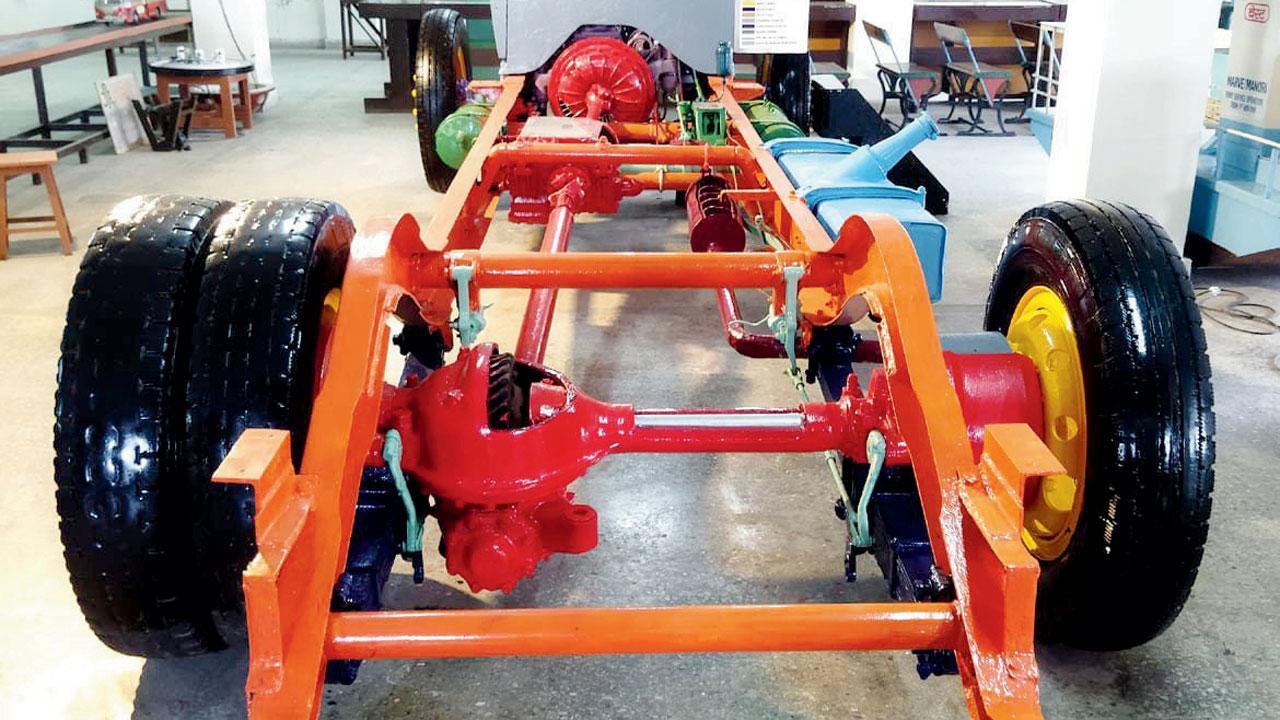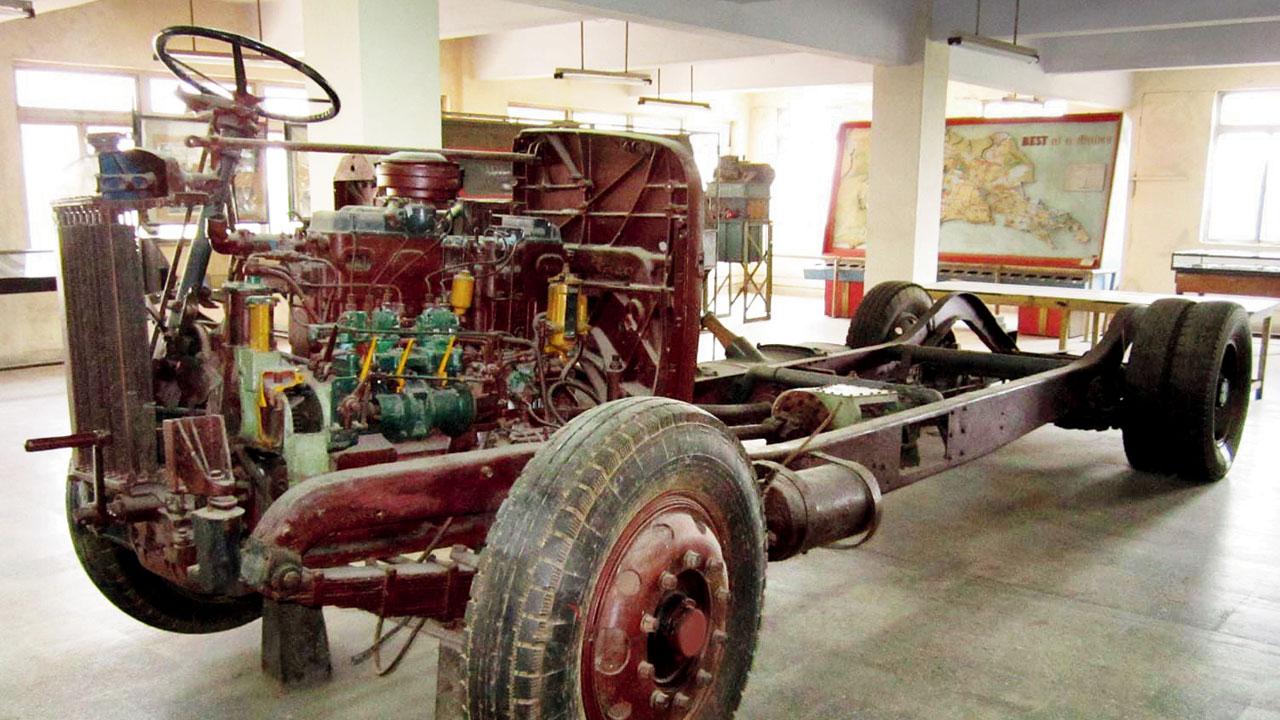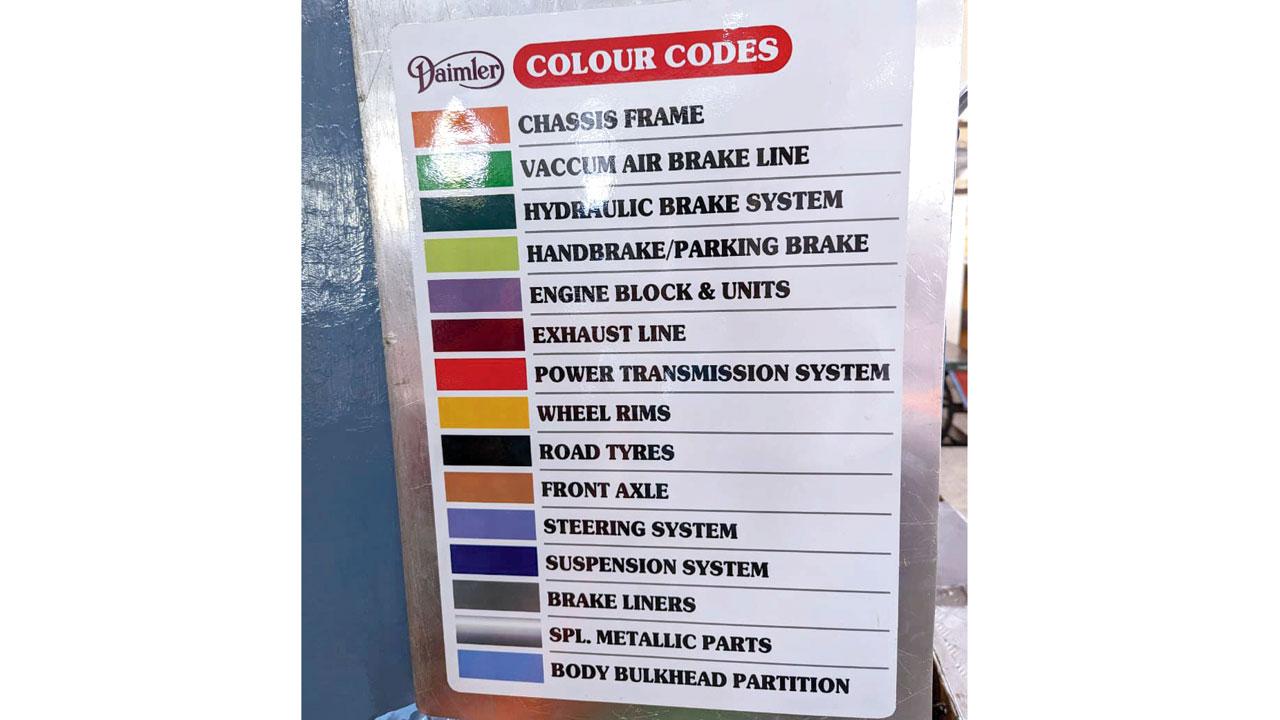Model, which dates to 1950s, has exact design as first-gen vehicles introduced in 1937

The reassembled, colourful frame of the double-decker
The Brihanmumbai Electric Supply and Transport (BEST) Anik museum has given the chassis of a first-class double-decker bus a new lease of life. The Daimler chassis, which can be seen at the heart of the museum, had been dismantled part by part and reassembled. This is an important piece of Mumbai’s transport history as double-deckers were introduced in 1937 to cope with the increasing crowd and the Daimler Company’s double-deckers were the first such buses to be introduced in the city.
ADVERTISEMENT
 The chassis prior to restoration
The chassis prior to restoration
During a visit to the museum recently, mid-day found that the BEST staff at the museum have also put in place signage and descriptions to shed light on how this first bus used to operate and function, and labelled all its parts and spares. A small ladder has been placed at the old driver’s cabin and one can even take a selfie there.
Officials explained that though this was the last remaining chassis of a 1950s bus, it was exactly the same design as that of the 1937 bus because it came from the same lot. The bus has a crank handle in the front to start the vehicle as it was done in the olden days, a bhopu bulb horn and two pedals for brakes, hand gears, a clutch on the left and accelerator on the right and even a semi-automatic transmission system.

A sign, which uses colours to shed light on each component
There were 308 double-deckers and 77 single-deckers between 1953 and 1955. The buses could ferry 71 passengers at a time, including standees. Introduced in 1937, the last bus in this series was bought in 1952-53 and it remained in public service until December 21, 1972. On its last day, the final trip of the bus included a public ceremony attended by Khajibhai Ganatra, the then-mayor while P B Kerkar, the then-general manager of BEST, drove it into the Mumbai Central bus depot himself.
308
No of double-deckers between 1953 and 1955
 Subscribe today by clicking the link and stay updated with the latest news!" Click here!
Subscribe today by clicking the link and stay updated with the latest news!" Click here!







